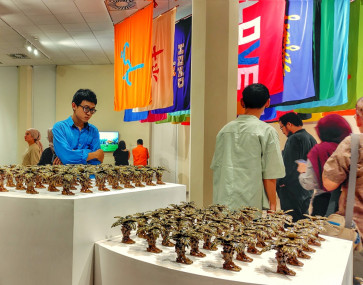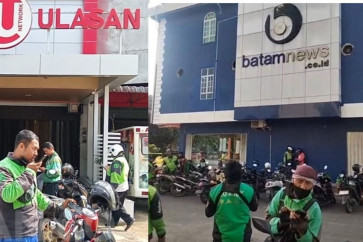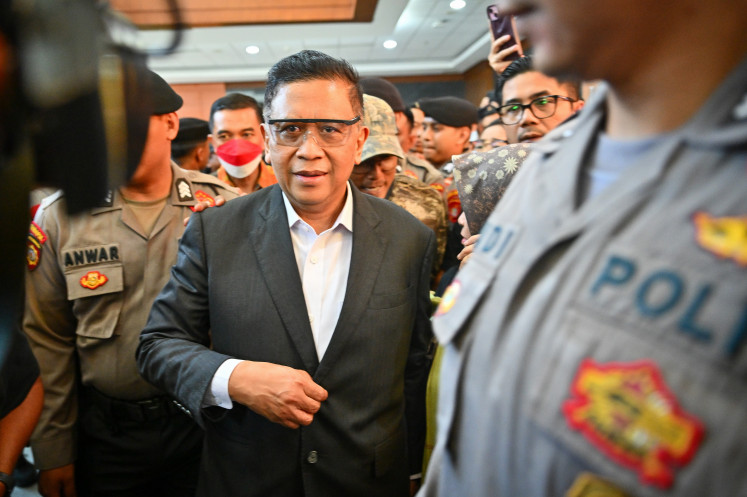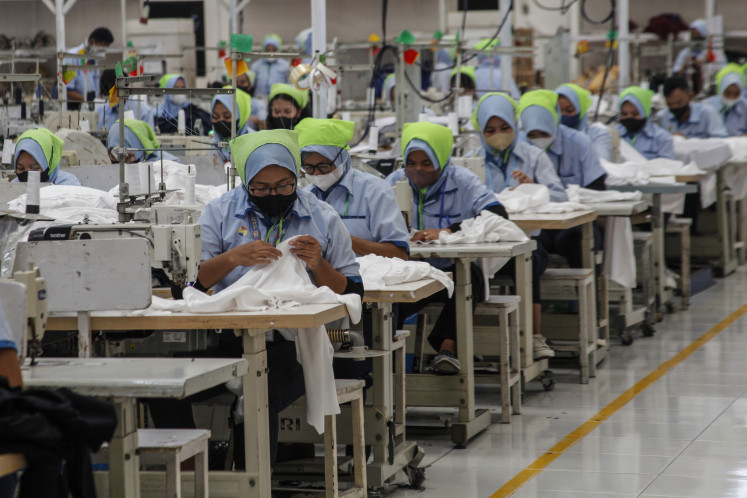Popular Reads
Top Results
Can't find what you're looking for?
View all search resultsPopular Reads
Top Results
Can't find what you're looking for?
View all search resultsBook on Balinese music launched
Dozens of Balinese performers of various music genres gathered at the Serambi Arts Antida studio on Saturday night to celebrate the launch of a book on the journey of non-traditional music from Bali over the last decades
Change text size
Gift Premium Articles
to Anyone
D
ozens of Balinese performers of various music genres gathered at the Serambi Arts Antida studio on Saturday night to celebrate the launch of a book on the journey of non-traditional music from Bali over the last decades.
Launched by the Bali Creative Community (BCC), the book, titled Blantika Linimasa, Kaleidoskop Musik Non-Trad Bali, was initiated by Rudolf Dethu and several writers. The book is said to be the first document that comprehensively records the progress of Balinese music.
“There are not many documents on Balinese music. We have lost a lot of history; the current generation doesn’t know about the struggle of their previous generations in the musical industry,” said Jimmy Silaa, a famous music arranger from the 1980s.
Attending the event were musicians, producers and singers from Bali, such as TripleX, Lolot Band, Rahman, Jimmy Silaa and many others.
After discussing the book, they enjoyed a performance by musicians that were popular in the 1990s, including Yong Sagita and Tropical Transit.
The 2000s were represented by Lolot Band and TripleX, which pioneered rock music in the Balinese language; Double T, which performed reggae in the Balinese language; and Riwin and Tropical Transit, whose genre is world music.
Representing the last decade were Nymphea, Navicula and Superman Is Dead.
Rudolf Dethu, editor and conceptor of the book, said the book tells the journey of non-traditional music in Bali since its first appearance until the latest development, and classified popular music in Bali as BaliBali and Balinesia.
The naming of these two groups will ease basic classification on the language used in the lyrics —
BaliBali for lyrics in songs using the Balinese language and Balinesia for songs in Indonesian or English.
“This nomenclature across genres is interesting, because this might only happen in Bali, where many musicians use local languages for non-traditional music, such as punk rock and reggae,” Dethu said.
Not only in terms of language, BaliBali musicians have a remarkable history, such as Lolot, whose album sold 700,000 copies, breaking the record in album sales that is difficult even for a national musician to achieve.
“Balinese language music used to be very popular, although that is declining,” said Dethu.
“This might be the first book in Indonesia documenting the local music scene,” singer Ayu Laksmi, whose genre is world music, commented on the book written by Anton Muhajir, Alfred Pasifico and Gede Robi Supriyanto, the vocalist of Navicula band.
The writing process started with discussions between the authors and stakeholders in the music industry in Bali.
“There are not many books about the history of Balinese music. We hope this book can be a reference for people in the music industry and art for further discussion,” said Emma Baulch, an Australian writer who wrote the book Making Scenes: Reggae, Punk, and Death Metal in 1990s Bali.
The book related that in the 1960s and 1970s, Balinese-language pop music had developed and was used as a political media. It used a modern instrument like piano. As written by cultural expert Nyoman Darma Putra, lyrics were very much affected by the political situation of the era.
Two most influential political parties at that time, the Indonesian Nationalist Party (PNI) and the Indonesian Communist Party (PKI), both established their own art and culture organizations and used Balinese songs to attract followers.
There were some nationalism-themed songs, such as “Juru Pencar”, “Buah Buni” and “Merah Putih” composed by Gde Dharna from Singaraja, the capital of Bali province until 1958 before Denpasar.
“Merah Putih” in the Balinese language was inspired by the attack of the Netherlands Indies civil administration on Buleleng in 1945. The lyrics aimed to give a fighting spirit to achieve independence, while “Buah Buni” satirized the political parties.
At the end of the 1970s, Balinese music turned into an industry with the presence of a recording studio and band pioneered by A.A. Made Cakra. It was said that people in Bali were very enthusiastic to buy his music, which sold 100,000 albums.
The lyrics were about relationships, love and nature, with “Galang Bulan” and “Bungan Sandat” the most popular songs.










